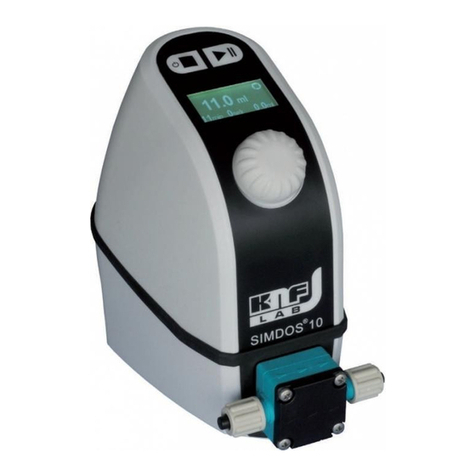
Vacuum Pump System SC/SEM/SH/SR950 Safety
Translation of original Operating Instructions, English, KNF 125549-125552 11/12 7
3. Safety
The vacuum pump systems are built according to the generally
recognized rules of technology and in accordance with the
pertinent occupational safety and accident prevention regulations.
Nevertheless, potential dangers during use can result in injuries to
the user or others or in damage to the pump systems or other
property.
Only use the vacuum pump systems when they are in a good
technical and proper working order, in accordance with their
intended use, observing the safety advice within the Operating
Instructions, at all times.
Make sure that only trained and instructed personnel or specially
trained personnel work on the vacuum pump systems. This
especially applies to assembly, connection and servicing work.
Make sure that all personnel have read and understood the Opera-
ting Instructions, especially the "Safety" chapter.
Observe the accident prevention and safety regulations when per-
forming any work on the vacuum pump systems and during opera-
tion.
Do not expose any part of your body to the vacuum.
Open housing parts with notice sticker (see fig. 1) only after sepa-
rating mains plug from power source.
Only SC950:
Ensure that personnel check that the hand terminal is the right one
for this particular system before using a SC950 vacuum pump
system. Vacuum pump systems are equipped with a paging sys-
tem for this purpose (see Actuating the vacuum pump system,
page 36).
When transferring dangerous media, observe the safety regula-
tions for handling such media.
Be aware that the vacuum pump systems are not designed to be
explosion-proof.
Make sure the temperature of the medium is always sufficiently
below its ignition temperature, to avoid ignition or explosion. This
also applies to unusual operational situations.
Note that the temperature of the medium increases when the pump
compresses the medium.
Hence, make sure the temperature of the medium is sufficiently
below the ignition temperature of the medium, even when it is
compressed to maximum permissible operating pressure of the
vacuum pump system. The maximum permissible operating pres-
sure of the vacuum pump system is stated in the technical speci-
fications (see chapter 4, page 9).
If necessary, consider any external sources of energy, such as
sources of radiation, that could additionally heat the medium.
Personnel
Working in a safety-
conscious manner
Fig. 1: Notice sticker
Correct match between hand
terminal and vacuum pump
system
Handling dangerous media
Handling flammable media




























